Menu
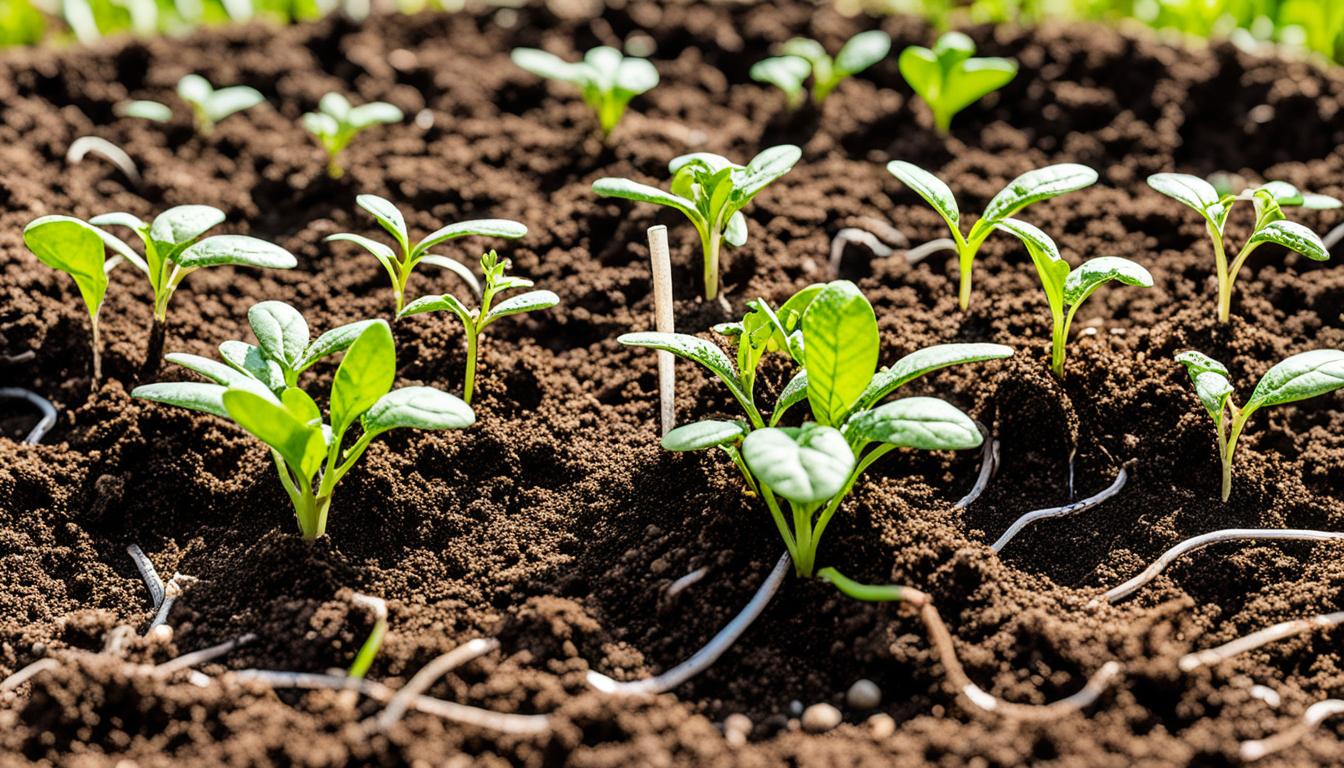
Around 50% of North American soil’s original organic matter was lost in the 1800s. It got into the air as carbon dioxide because of intense ploughing by European settlers. This loss shows why we need to monitor soil health and use sustainable farming methods. It’s key to keep ecosystems in agriculture alive. The change in how we used land, often due to old farming ways, has hurt the soil. This reduced soil quality and made more greenhouse gases.
Agriculture, forestry, and changing the land together make about 24% of the world’s greenhouse gases. So, watching soil health is critical. We need to lower these emissions and make the soil stronger. Soil is full of life, with lots of different actions happening. It’s not just dirt. So, when we take care of the soil, it not only helps farms grow but can lock up carbon too. Around 58% of soil organic bits are carbon.
The aim is to check soil health and use ways that help it. This will lower the carbon in the air and keep things going well. We can do this by not disturbing the soil much, adding compost, and changing what we grow. This makes the soil healthier. With careful, regular checks, we can make farming last longer and do better. This is good for the earth and for what we grow.
It’s key to see why soil health matters for good farming and keeping nature safe. When we check soil quality well, we learn what the soil needs to stay healthy. Then, we can use new farming tech to keep the soil in good shape for the future.
Soil plays a big part in making our world work well. Farmers help by not disturbing the soil too much. This keeps the soil’s structure and its ability to use nutrients working well. They also use methods like planting cover crops and avoiding tilling. These actions turn the soil into a store for carbon. Doran and Parkin showed how good soil practices help the earth in a long way.
Long ago, Indigenous peoples knew a lot about the soil. They looked at the soil’s colour and the life they could see inside, like earthworms. Using these signs, they figured out if the soil was good. We still use these methods today, along with science. Bünemann and others have brought the two together. Now, we really understand what keeps the soil healthy.
| Indicators | Traditional Method | Scientific Method |
|---|---|---|
| Soil Colour | Observation of dark, rich hues | Organic matter content tests |
| Organisms Presence | Noting visible earthworms and microbes | Microbial biomass analysis |
| Soil Structure | Feeling texture and moisture | Soil structure classification |
Today, we merge old and new ways to check soil. This keeps our farming tech working well and the soil healthy. Baveye and others say it’s important to use both historic and modern ways to care for our soil. This is vital for the future of farming.
It’s key to know the parts that make soil healthy. This knowledge boosts farm output and helps nature stay strong. Soil health combines life, touch, and composition, making a richer ground for plants to grow.

Life in the soil shows us how well it’s doing. A good check tells us that many tiny living things are there, like bacteria and fungi, helping with recycling. Even earthworms, by moving through the soil, make it easier for plants to root. They make the soil less packed, letting water and air flow. And believe it or not, one pinch of soil can have a billion of these living things.
This is about how the soil feels, holds water, and breathes. It can change if too many machines or animals walk over it too much. But, looking after the land well can keep the soil just right. Adding stuff like old plants makes the soil soak up water better, up to 10% more for every 1% added.
Chemicals in the soil are like its food. Getting the right mix helps plants grow strong. Checking the soil from time to time can guide farmers to give the best food for their soil. Some farming methods even help the soil capture more carbon and keep important nutrients. Farming should also think about how some things can harm water and too many nitrates in the soil, as science tells us.
Working with all these soil parts can make farming last longer and keep our land safe. By studying every detail, we can help the earth and keep it flourishing.
| Component | Factors | Impact on Soil Health | t
|---|---|---|
| Biological | Microbial Population, Earthworms, Decomposition | Enhances Nutrient Cycling, Improves Soil Structure | t
| Physical | Texture, Structure, Porosity | Affects Water Infiltration and Retention | t
| Chemical | pH Levels, Nutrient Content, Mineral Balance | Essential for Plant Growth, Aids Carbon Sequestration | t
Knowing various soil testing methods is key to understanding soil health. These tests show us how much nutrients are in the soil and its pH level. They help farmers make the right choices for their soil to grow crops best.
Analysing soil in labs gives us a deep look at its chemical makeup. It finds important nutrients like phosphorus and potassium. Checking the soil’s pH and electrical levels is crucial before adding fertiliser.
Before planting, it’s important for growers to check their media’s nutrients and pH. This ensures the soil is ready for plants.
Tests done in the field don’t need special tools. They are for checking up on the soil often. The Pour Thru method is good because it doesn’t hurt the plants and gives accurate continuous results.
After putting down fertiliser, soil samples should be taken a couple of hours later. This makes sure the results are correct. Doing tests the same way each time helps keep the data reliable.
The Haney test looks at the soil’s life, not just its nutrients. It measures the soil’s breathing and tiny life like bacteria. This helps us see how healthy the soil is by looking at its chemical, physical, and biological sides together.
Evaluating the way the soil breathes tells us about its natural processes. Then, we can make the soil better in ways that last.
Observing the topsoil is key in the field without digging. It tells us much about the soil’s health quickly. We look at things like what covers the soil, how the leftovers break down, and how it all looks. This helps us see if there’s any erosion or how diverse the soil life is. It’s the first thing we do before deep studies.
“Observational techniques are invaluable for quickly gauging the impact of different management practices on soil health. Simple visual assessments can reveal significant information about soil cover and biodiversity.”
We can use pitfall traps for a good look at what lives in the soil. They’re best in warm seasons when the soil critters are out, but not on rainy days. By placing these traps around the farm, we learn how our farming methods affect the soil.
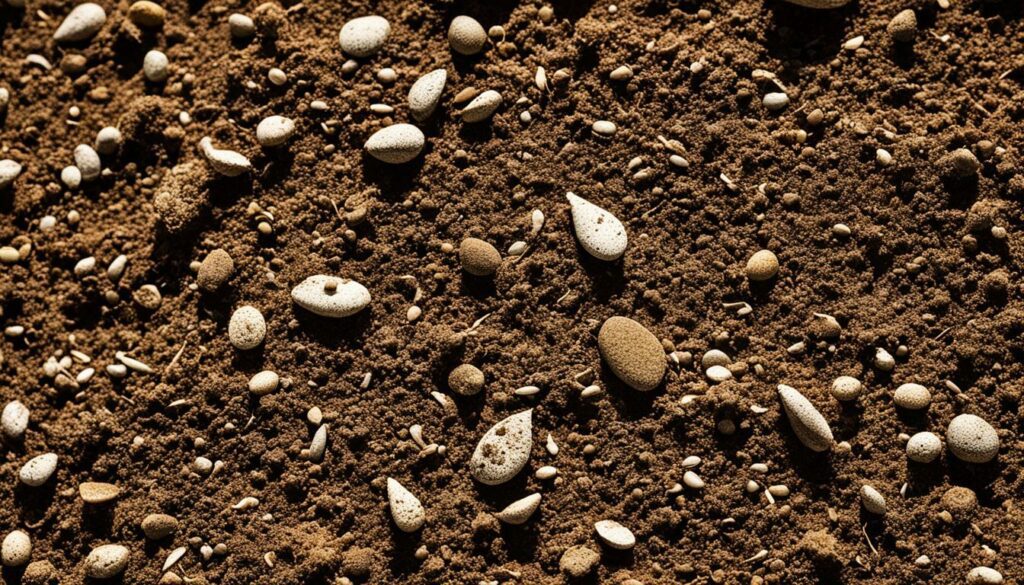
Berlese funnels are also very handy. They let us check on the soil bugs that move. This method works for all types of places. It’s important to use control samples to compare fairly.
A Baermann funnel hunt can gather tiny worms from the soil. We need a special microscope to see and count them. This tells us a lot about the soil’s life. We also look at how the soil sticks together. It shows how strong the soil is and tells more about its health.
| Trap Type | Purpose | Optimal Use |
|---|---|---|
| Pitfall Traps | Monitor soil-dwelling organisms | Growing season, avoid rainy days |
| Berlese Funnels | Survey mobile soil organisms | Indoors/on-farm with control samples |
| Baermann Funnels | Collect nematodes | Requires dissecting microscope analysis |
Counting earthworms tells us a lot about the health of the soil. They are very important to the soil’s well-being. For example, they help the soil get air and move nutrients around. Checking on the number of earthworms is a good way to see how healthy the soil is. Whether doing it for science or to look after land, counting earthworms is done in a very careful way. This helps make sure the count is right.
To count earthworms, there are two main methods. One is called Hand Sort, where you dig down a little and check the soil by hand. The other is the Mustard extraction, which uses a special solution to bring the earthworms up. Each method needs certain items like a tool for measuring, water, and a bag to put soil in. It’s good to do this count in Autumn or Spring, when the weather’s mild. And try not to do the count just after putting manure or compost, to get accurate results.
When counting earthworms, it’s key to know what type they are. There are three main types of earthworms: ones that live near the top, those a bit deeper, and ones that dig really deep. Knowing these types can help us understand the soil better.
After you’ve counted earthworms, understanding what this means is very useful. When all three types of earthworms are doing well, it signals the soil’s health is good too. Each type of worm does a specific job based on how deep they are in the soil. This shows the many ways the worms tell us about the soil’s health.
Writing down what you’ve seen and learned from the earthworm count helps with farming. The Soilmentor Regen Platform uses earthworm counts to help farmers make better choices. This simple step can really help make sure the soil stays healthy for the long term.
| Method | Description | Equipment | Season |
|---|---|---|---|
| Hand Sort | Digging and manual soil breakup | Quadrat, dig tools, bin bag | Autumn/Spring |
| Mustard Extraction | Using mustard solution for extraction | Mustard powder, water, quadrat | Autumn/Spring |
Infiltration tests help us understand soil’s ability to soak up and keep water. This is key for farming in a way that doesn’t harm the land. These tests look at how quickly water soaks in the soil which affects how well plants grow. They also help reduce soil erosion and refill the underground water sources. Overall, they show how healthy the soil is.
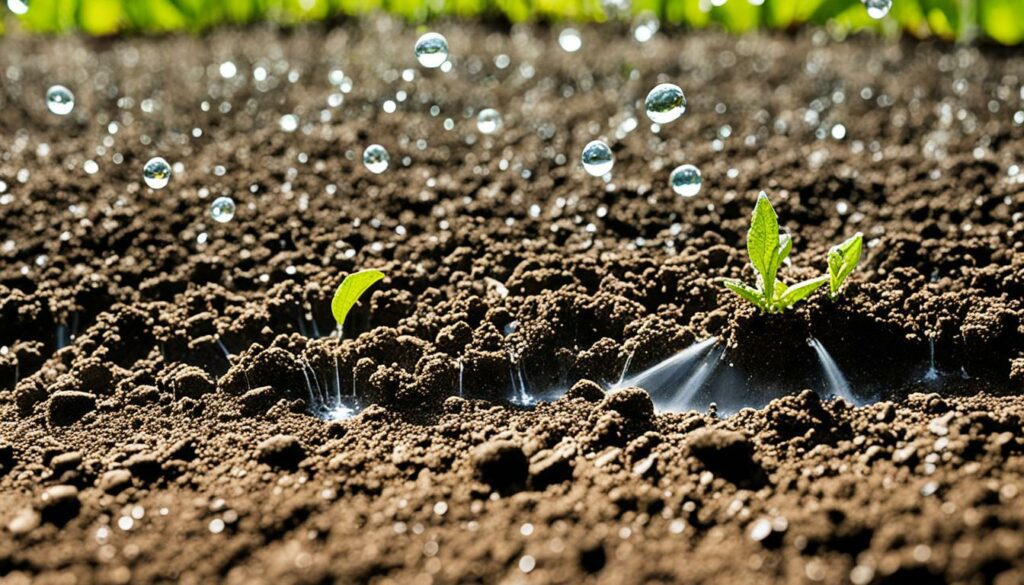
Testing infiltration is about seeing how fast water goes into the ground. This speed changes based on the type of soil, how it’s formed, and the size of its tiny holes. To do the test right, we also look at how wet the soil is at the start and if there are certain chemicals in it.
The ground might get too tightly packed at first, because of ploughing and the weight of machines on it. This makes the soil less able to let water in and air move through. By doing these tests, we can spot and work on fixing these problems to keep our soil healthy.
Understanding how water goes into the ground tells us a lot about the soil’s shape, holes, and how much living matter it has. A good quality soil has just the right amounts of water and air, with enough space for them, besides the solid bits. This setup helps the soil hold and use water correctly.
The US Department of Agriculture points out that how quickly water goes into the soil is key. It’s usually said in inches over each hour. Water’s passage through soil is influenced by its shape and holes, its content of living matter, and the levels of certain chemicals in it.
Knowing these rates helps us improve how the soil handles water, raising crop output and sticking to good farming ways.
The Soil Slake Test is a key part of checking soil health. It tells us how stable soil is underwater. This is important for knowing if soil can resist compaction and erosion.
First, I gather soil samples and put them in a mesh basket. Then, these are put in water to see how they fall apart. This helps measure soil fragment stability.
If these bits break down fast, the soil might not be very stable. This could mean the soil is not in great shape.
Evaluating the Slake Test results is easy. Soil that doesn’t fall apart much in water is healthy. It probably has lots of organic matter and living things.
Such soil is good at resisting bad weather. But, if the soil breaks down quickly in water, it might need help.
The Soil Quality Institute helps farmers test their soil with the Slake Test. They say this helps keep the land healthy over time. This is good for the soil and for crops.
In places like the High Weald, where soils can be very different, this test is important. It shows how we can improve and watch soil health in various places. This is key for managing the land well.
Doing regular Slake Tests makes soil management better. It’s crucial for healthy farming areas.
Looking at soil colour hints at key soil health signs. Its shade and brightness tell us about the organic matter content. This is important for lively ecosystems. Dark colours show the soil has lots of organic matter, which is great for its health.
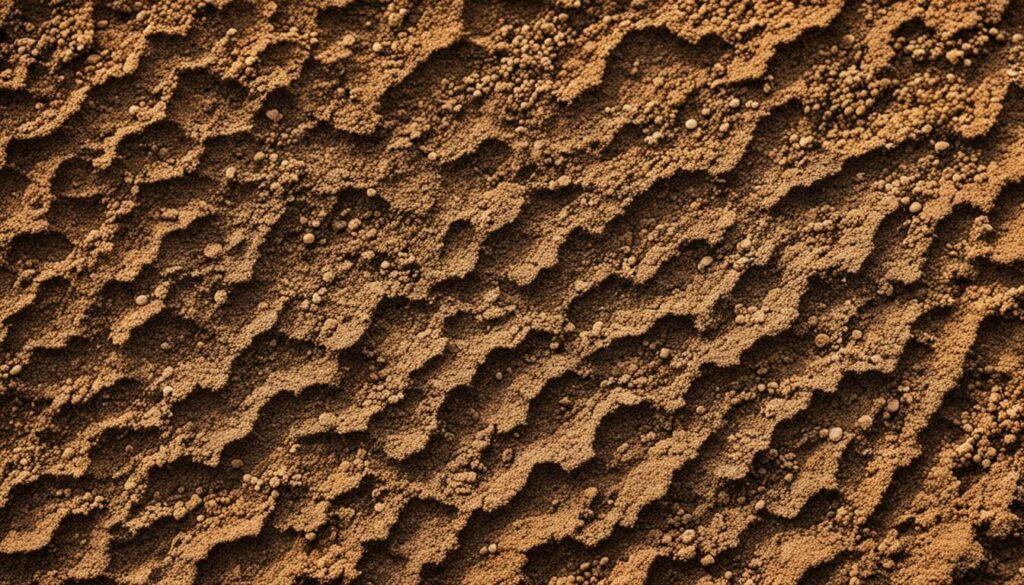
Soil colour shows us its mineral make-up, how much water it holds, and more soil health hints. Light sandy soils are usually poor in nutrients. Contrastingly, loamy soils, with a good mix of sand, silt, and clay, are fertile. They support plant growth well. Clay soils are usually dark and full of nutrients.
Different soil colours can affect how well they hold heat and water. Dark soils keep fields warm and moist longer. This can help crops grow better and mature faster. Warmer springs and cooler autumns can help crops like vines grow well.
| Soil Type | Characteristics | Colour Influence |
|---|---|---|
| Sand | Low water retention | Lighter colour |
| Silt | Susceptible to compaction | Varied colours |
| Clay | High nutrient retention | Darker colour |
| Loam | Balanced fertility | Moderate colour |
Checking soil colour can give a quick look at soil health. It’s easy and doesn’t need a lab. This way, we can start checking our field’s important health signs early. Make looking at soil colour a regular part of your field checks. It’ll help you keep an eye on your soil’s health and change how you farm if needed.
Soil hardness is very important as it affects water flow, root growth, and overall soil health. A penetrometer checks how hard or compact soil is. It measures the force needed to push into the soil (say, in pounds per square inch).
A penetrometer is the main tool for testing soil hardness. It measures hardness on the surface and deeper down (0 – 6 inches and 6 – 18 inches). This tells us how compact the soil is. For good crop growth, the hardness should be less than 300 psi.
Measure when the soil is wet but not too wet. This ensures the readings are accurate.
Soil compaction has a big impact on the soil’s health. It reduces the size of spaces where water and air move. This can make it hard for plants to grow well and for water to get through. Doing things like deep tillage, adding organic matter, and using cover crops can help reduce compaction.
Places with different water drainage might need special care. They could need extra soil tests to keep the soil from getting too compact.
| Measurement Type | Depth Increment | Psi Range | Root Growth Impact |
|---|---|---|---|
| Surface | 0 – 6 inches | 0 – 300 | Normal |
| Subsurface | 6 – 18 inches | 300+ | Reduced |
It’s crucial to manage both surface and subsurface soil hardness for healthy soil. Testing the soil helps us know how compact it is. Then we can use the right methods to make the soil better for growing plants.
It’s key to recognise the role of microbial biomass in soil health. The microBIOMETER® helps measure soil life, showing a quick way to check soil health. This device is great for farmers looking to understand their soil better.
This tool lets us see how many microbes are in the soil. With the microBIOMETER®, checking these levels is easy. Farmers can use it to improve their crops by knowing which microbes are active.
The test is easy and doesn’t harm the environment much. It shows if there is a lot of life in the soil. Life like protozoa and nematodes help with nutrients and keep plants safe from diseases.
There are many ways to measure soil microbes. They include methods like checking for carbon in the soil. These tests are important because soil microbes make up about 5% of soil. They help with breaking down things in the soil and benefit plant growth.
It’s key to understand soil respiration to get the gist of biological activity in soil. This process measures the CO2 that comes from the soil’s organisms as they break down stuff. It tells us a lot about soil’s health and how it’s doing for growing things.
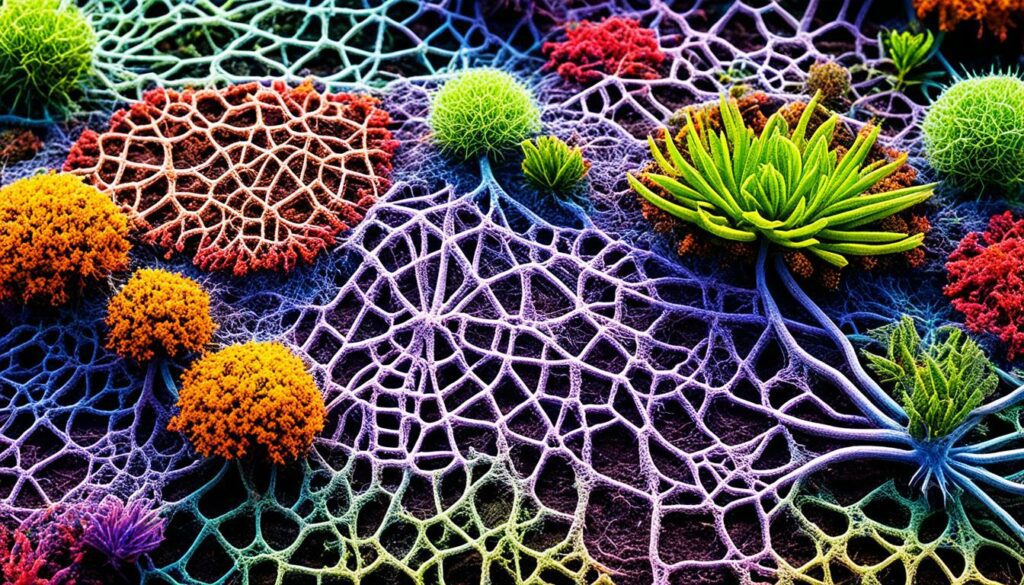
There are lots of ways to measure soil respiration, all good for checking the soil’s condition. People often use CO2 traps and sensors. But there are also high-tech methods like the Drager-Tubes and the Solvita Soil test:
These methods get us important info. They help make good decisions about the soil and show how important the tiny life in the soil is.
Soil respiration data is super important. It helps us see how much carbon the soil keeps or releases. Here’s what we learn:
Checking soil respiration often is vital. It keeps us up to date on the soil’s life and helps farms and nature stay healthy. It does all this by looking at the activity in the soil and showing ways to keep things in balance.
Using good carbon sequestration methods is key to making soils better at containing carbon. This helps fight climate change. Soils in farms can keep more than a billion extra tons of organic carbon every year. This is because grasslands can take in carbon like about 6.5 billion metric tons yearly. Also, areas where crops are grown could keep between 0.90 and 1.85 billion metric tons of carbon each year. This meets about 26-53% of the ‘4p1000 Initiative’ goal for keeping carbon in the soil.
By using carbon sequestration methods, we can make the soil more fertile. This also helps lower CO2 levels in the air. Soils are great at storing carbon. They actually hold 2.3 times more carbon than the air does. They also have 3.5 times more than all living things. Keeping carbon in the soil not only fights the climate crisis but helps farming stay sustainable too.
There are many ways to help soils keep more carbon. Using cover crops is a big one. They help mix more organic carbon into the soil. Not ploughing the land much keeps the soil together and doesn’t mess up the carbon in it. Putting natural stuff like compost on the soil is also good. This adds to the soil’s organic matter. Doing these things as part of farming can up the soil’s carbon storing ability a lot.
| Sequestration Activity | Potential Carbon Sequestration (Billion Metric Tons/Year) | Other Benefits |
|---|---|---|
| Grasslands Management | 2.3 – 7.3 CO2 equivalents | Improves biodiversity and grazing |
| Croplands Practice | 0.90 – 1.85 | Enhances soil fertility and structure |
| Restoration Initiatives | 6.5 CO2 equivalents | Reverses land degradation |
It’s also shown by studies that we need a lot of mineral fertilisers to help keep carbon in the soil. These fertilisers are needed to keep the soil healthy and the carbon in it stable. The U.S. Department of Agriculture has put $10 million into a project to watch how well carbon is being kept in Conservation Reserve Program (CRP) lands. This includes lots of data being collected by different groups in various places.
Precision farming is changing soil health monitoring with the use of advanced agricultural technology. These tools help farmers manage soil more accurately, considering each plot’s unique needs. This leads to better use of resources and healthier soil.

The heart of precision farming is made up of many important technologies. These are designed to make watching soil health better:
For example, RTK technology can turn days of work into a single quick flight and cut down checking times to just moments. This saves a lot of time and money. Having very precise maps, with an accuracy of less than 10 centimetres, is vital for great soil care. RTK networks give this exact info in real time.
Digital agriculture is key in up-to-date precision farming. By using digital tools and data analysis, farmers get exact details about their soil. This helps them use fertilisers and other things more wisely. A study found in already well-nourished fields, adjusting phosphorus levels doesn’t change crop yields much. This proves accurate targeting is essential.
Digital tools also help check the best ways to collect soil samples. Methods like grid sampling with advanced equipment offer detailed soil health checks. This helps farmers choose the best actions quickly and correctly.
In Iowa, over half the fields have enough phosphorus (P) and potassium (K). This shows that precision farming reduces the need for lots of treatments. It focuses on the unique needs of each area.
Precision farming technologies have significantly increased farmers’ production by 4%, reduced fertiliser use by 7%, decreased herbicide applications by 9%, lowered fossil fuel use by 6%, and delivered 4% savings in water.
Precision agriculture isn’t just about checking; it’s also about applying new ways to manage, like placing fertilisers deep in the ground. It includes careful steps to ensure accuracy and avoid mistakes from equipment problems or how the fields are set up.
Tools like remote sensors show crop and soil health in real time. This is vital for making quick, smart farming decisions. Also, aerial technology with special cameras can deeply check the soil. These inspections support the wider aims of precision farming.
Adding silvopasture systems to farmlands is great for the earth and farming’s future. Charles Rohla has spent 17 years showing how mixing animals and pecan trees helps.
Grasslands with trees can up their soil health by 30-50%. Trees add stuff to the ground, and their roots make the soil better at keeping nutrients.
In places with a lot of pecan trees, the soil gets healthier. It takes about 7-8 years for these trees to start making nuts. But by year 12-13, they grow a lot more. This not only helps with nuts but also makes cows healthier by keeping them cooler and giving them more to eat.
Using silvopastures means planning for the long run. The Noble Research Institute is looking into the best ways to mix trees, animals, and soil in their pecan farms. They’re checking how healthy the soil stays and how much money can be made.
Using plants to cover the ground is key in silvopastures. It helps keep the soil wet and makes better nuts, especially where there’s no extra water. These systems also make the land healthier by keeping soil problems at bay. This is really important for farms that have had issues with their soil, like not enough nutrients or too much wear and tear.
Around the world, these types of farming cover 1.36 billion acres. Still, the U.S. doesn’t use them much because of old farming ideas. But places like Europe have shown that mixing fruit and nut trees with animals can be very successful.
So, silvopastures are great for the land and farming’s future. They create a balanced way for soil, plants, and animals to help each other out.
Cover crops are essential for better soil and offer key health benefits. Research from the University of Nebraska-Lincoln, funded by the USDA-NRCS, shows their various pluses. Diverse cover crop mixes have many benefits for the soil.
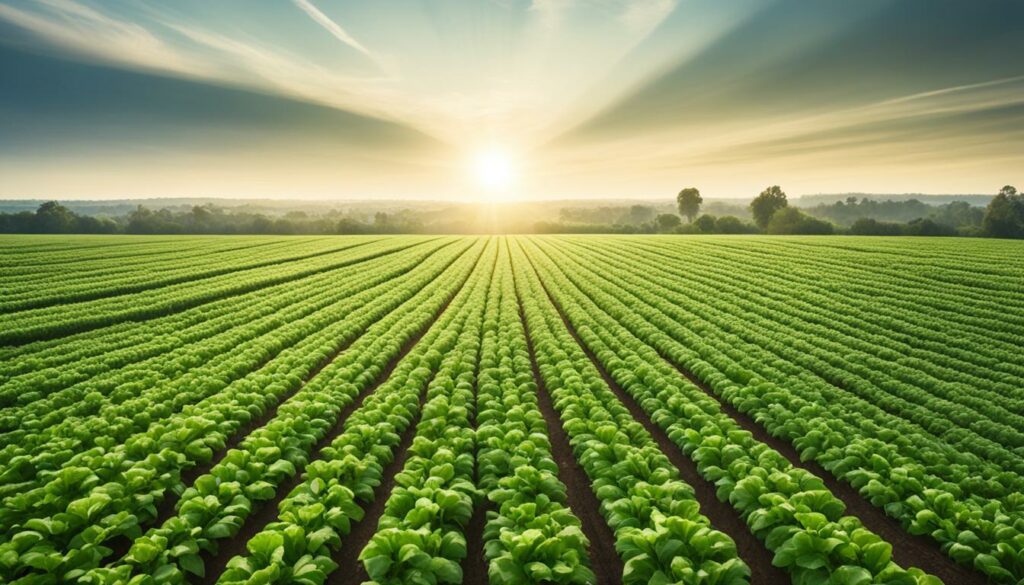
Picking the right cover crops is vital for good soil health. The study looks at many mixes, including Ethiopian cabbage and winter pea. Each type helps in different ways based on the weather, soil, and how the farm works.
Cover crops greatly help soil health. They increase things like organic matter and reduce soil density. Their use brings about several crucial changes:
Furthermore, cover crops raise organic soil carbon by 7.3%. In corn fields, this carbon doesn’t go away easily, suggesting a big role in carbon dioxide storage. With wider use in the U.S., they might save 107 million tons of CO2 each year. This means better soil, stronger farming, and more sustainable agriculture.
It’s key to use strong monitoring practices for healthy soil in farming. We learn from real soil health case studies. This helps us use the best approaches to solve problems. We look at the state of the soil, checking its physical, chemical, and life elements.
There are many ways farmers have made their soil better. They have tried cover crops, no-till farming, and added natural materials. Cover crops, for example, can boost organic stuff and help out tiny life forms. See below for some details on successful soil health work:
| Soil Type | Bulk Density (oz/in3) | pH Range | Organic Carbon Score | Total Nitrogen Score |
|---|---|---|---|---|
| Sandy | 5.8-7.2 | 20 | 18 | |
| Silty | 6.0-7.0 | 22 | 19 | |
| Clayey | 6.1-6.9 | 25 | 20 |
Monitoring soil health is not without its challenges. One big issue is getting the right bulk density numbers. Soil that’s too packed can throw off readings. Regularly checking and adjusting our tools is key. Dealing with salt buildup also needs special care to prevent problems.
No two farms are the same, and smart solutions must fit the farm and its soil. Knowing how different soil health signs relate lets us fix several issues at once. This is key for stopping soil loss and keeping nutrients where they’re needed.
With a good plan and learnings from soil health case studies, farmers can make a strong, lasting farming system. Overcoming these monitoring challenges is key for healthier soil and long-term farming success.
Monitoring soil health is crucial for lively ecosystems and sustainable farming. Combining old wisdom with new science helps us meet soil challenges. Soil stewards play a key role by connecting our health with the earth’s, benefiting all systems involved.
We need to focus on how soil grows and stays healthy. Soil compaction is a big issue, especially in fields where it’s reached critical levels. We must find better ways to deal with this problem. Practices like no-till farming show real promise, improving crops and storing more carbon in the soil.
It’s essential to farm sustainably using the best technology. This approach protects our environment and boosts farming success for the future. Thus, regular monitoring of soil health is more than just a task – it’s our promise to support life on earth.
Soil health is crucial for good farming and the environment. It covers everything from the living organisms in the soil to its physical makeup. This all affects how well we can grow crops, filter water, and store carbon. Healthy soil means strong ecosystems and it helps farmers work sustainably.
In the past, changes in how we used the land hurt soil health. This happened a lot when European settlers started farming. They took away about half of the organic matter in the soil, releasing a lot of carbon dioxide. As a result, the soil got worse, leading to issues like more greenhouse gas in the air. Now, we’re trying to fix this through better farming that helps the soil recover.
The life in the soil, such as tiny organisms and earthworms, is very key. They help move nutrients around, make the soil better, and support plant life. This creates a living world below our feet that’s essential for good soil that stays fertile.
Soil testing looks at a mix of things in the soil. It checks the chemicals, nutrients, and even the living things in there. The way the soil feels and looks, and how water moves through it is also important to test. There are special tests, like the Haney test, that tell us about the life in the soil.
The way we farm can either help or harm the soil’s ability to store carbon. Good practices, like using cover crops and limiting how much we dig up the soil, make the ground ‘eat up’ more carbon. This makes the soil healthier and lessens the amount of a harmful gas, CO2, in the air.
To observe the soil’s top layer, we look at things like how much is covered by plants or leftover plant matter. By looking closely we can notice signs of erosion, see if the soil’s biodiversity is doing well, and check on how well things like cover crops are working.
Counting earthworms is a good way to see if the soil is in good condition. Having lots of these wiggly creatures means the soil is airy, good at getting nutrients around, and strong. All these things are very important for healthy soil that helps plants grow well.
Checking how water soaks into the soil tells us a lot about how healthy it is. This is important for plants to grow well and to stop the soil from being washed away. A test for this shows us the soil’s structure, how much space is in it for air and water, and how much good stuff like organic matter is in there.
The Soil Slake Test is about seeing if the soil sticks together well when it’s wet. This tells us about its strength against being washed away or pressed down too hard. It also shows how much life and rich matter the soil has, which are its special strengths.
Looking at the soil’s colour can quickly tell us a lot. Darker soil often means it’s rich in organic matter. This is crucial for nurturing life in the soil and supporting plants to grow strongly.
Penetrometers measure how hard it is to push into the soil. If it’s too hard, water and plants can’t get through well. This leads to looking for ways to make the soil ‘softer’ or more open, like letting more air in or adding things to make it less compact.
The amount of living stuff in the soil shows us its health. These tiny life forms are crucial for recycling nutrients and breaking down old stuff. A healthy population of these microorganisms makes for soil that can support a lot of plant life.
To measure soil respiration, we look at how much CO2 comes out of the ground. There are special tools that trap this gas. This tells us a lot about the life in the soil and its role in keeping the planet’s air clean.
Using things like cover crops and not tilling the soil so much, and adding natural material help the soil store more carbon. This makes the soil richer, helps plants grow, and takes harmful CO2 out of the air, which is good for fighting climate change.
Precision farming uses modern tools to look after the soil better. It lets us treat different parts of a field in just the right way. This means doing things that keep the soil in the best shape and help the environment.
Silvopasture mixes trees with areas for animals, making the whole area healthier. It boosts the number of different life forms in the soil and makes soil quality better. This kind of farming creates a strong, natural balance that’s good for everyone.
Cover crops help keep the soil from washing away, improve how nutrients move around, and add good stuff back into the ground. Picking the right cover crops for the place and the time is key to making the soil and plants thrive.
Keeping an eye on soil health can be tough because soil is different everywhere. Tests can be expensive, and it’s not always easy to know what to do when a test says the soil isn’t healthy. The best way to deal with these difficulties is to use both traditional and new ways, share what works, and find smart, not too expensive methods that fit each place.